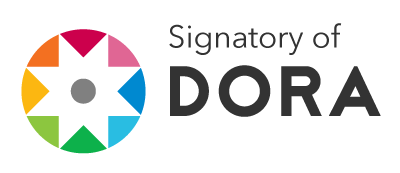Stakeholders Identification in a Disaster Through Twitter: Study Case SINABUNG 2018
Abstract
Twitter has become an important tool for knowing in real time what happens in the political, social and economic world. This platform is increasingly attractive as a communication method, which can be used in logistic and humanitarian operations processes improving communication between the actors involved in a natural disaster situation. Thus, in the present investigation a Social Network Analysis SNA approach is implemented using data generated in the social network Twitter about a disaster event analyzing three important actors: users, hashtags and URLs. The methodology is applied to a disaster study case (Sinabung volcano eruption in 2018). From this analysis, relevant users, topics and sources of information were identified during the disaster’s occurrence. These analyzes offer an overview of the interactions and impact of the most influential elements during the event under study, having important contribution news teams, social networks and research centers. The findings of the present study are compared with a previous study finding similarities in most of these but having in this study an additional identification of actors of the academic and technical field who seek to contribute and disseminate relevant information of the disruptive event.
Downloads
References
Holguín-Veras, J., Jaller, M., Van Wassenhove, L. N., Pérez, N., & Wachtendorf, T. (2012). On the unique features of post-disaster humanitarian logistics. Journal of Operations Management, 30(7–8), 494–506. https://doi.org/10.1016/J.JOM.2012.08.003
Rodríguez, H., Díaz, W., Santos, J. M., & Aguirre, B. E. (2007). Communicating Risk and Uncertainty: Science, Technology, and Disasters at the Crossroads (pp. 476–488). Springer, New York, NY. https://doi.org/10.1007/978-0-387-32353-4_29.
Landwehr, P. M., & Carley, K. M. (2014). Social Media in Disaster Relief. Springer, Berlin, Heidelberg.
https://doi.org/10.1007/978-3-642-40837-3_7
Gao, H., Barbier, G., Goolsby, R., & Zeng, D. (2011). Harnessing the Crowdsourcing Power of Social Media for Disaster Relief. Retrieved from https://apps.dtic.mil/docs/citations/ADA581803
Keim, M. E., & Noji, E. (2011). Emergent use of social media: a new age of opportunity for disaster resilience. American Journal of Disaster Medicine, 6(1), 47–54. Retrieved from http://www.ncbi.nlm.nih.gov/pubmed/21466029
Feldman, D., Contreras, S., Karlin, B., Basolo, V., Matthew, R., Sanders, B., … Luke, A. (2016). Communicating flood risk: Looking back and forward at traditional and social media outlets. International Journal of Disaster Risk Reduction, 15, 43–51. https://doi.org/10.1016/J.IJDRR.2015.12.004
Liu, B. F., Fraustino, J. D., & Jin, Y. (2015). How Disaster Information Form, Source, Type, and Prior Disaster Exposure Affect Public Outcomes: Jumping on the Social Media Bandwagon? Journal of Applied Communication Research, 43(1), 44–65. https://doi.org/10.1080/00909882.2014.982685
Takahashi, B., Tandoc, E. C., & Carmichael, C. (2015). Communicating on Twitter during a disaster: An analysis of tweets during Typhoon Haiyan in the Philippines. Computers in Human Behavior, 50, 392–398. https://doi.org/10.1016/J.CHB.2015.04.020
Scott, J., & Carrington, P. J. (2011). The SAGE handbook of social network analysis. SAGE publications.
Smith, M. A., Rainie, L., Shneiderman, B., & Himelboim, I. (2014). Mapping Twitter topic networks: From polarized crowds to community clusters. Pew Research Center, 20, 1–56.
Oliveira, M., & Gama, J. (2012). An overview of social network analysis. Wiley Interdisciplinary Reviews: Data Mining and Knowledge Discovery, 2(2), 99–115. https://doi.org/10.1002/widm.1048
Wasserman, S., & Faust, K. (1994). Social network analysis : methods and applications.
Knoke, D., & Yang, S. (2008). Social network analysis (Vol. 154). Sage.











